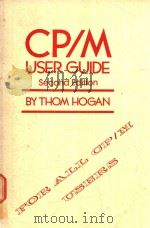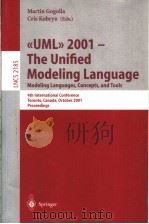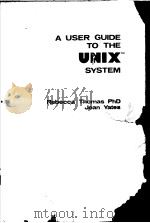《the unified modeling language user guide sedond edition P475》
| 作者 | 编者 |
|---|---|
| 出版 | 未查询到或未知 |
| 参考页数 | |
| 出版时间 | 没有确切时间的资料 目录预览 |
| ISBN号 | 无 — 求助条款 |
| PDF编号 | 820554148(仅供预览,未存储实际文件) |
| 求助格式 | 扫描PDF(若分多册发行,每次仅能受理1册) |
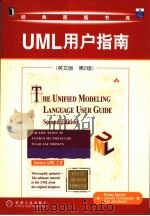
Part 1Getting Started1
Chapter 1 Why We Model3
The Importance of Modeling4
Principles of Modeling8
Object-Oriented Modeling10
Chapter 2 Introducing the UML13
An Overview of the UML14
A Conceptual Model of the UML17
Architecture32
Software Development Life Cycle34
Chapter 3 Hello,World!37
Key Abstractions38
Mechanisms41
Artifacts43
Part 2Basic Structural Modeling45
Chapter 4 Classes47
Getting Started47
Terms and Concepts49
Common Modeling Techniques54
Hints and Tips59
Chapter 5 Relationships61
Getting Started62
Terms and Concepts63
Common Modeling Techniques69
Hints and Tips74
Chapter 6 Common Mechanisms75
Getting Started76
Terms and Concepts77
Common Modeling Techniques84
Hints and Tips88
Chapter 7 Diagrams89
Getting Started90
Terms and Concepts91
Common Modeling Techniques96
Hints and Tips101
Chapter 8 Class Diagrams103
Getting Started103
Terms and Concepts105
Common Modeling Techniques106
Hints and Tips113
Part 3Advanced Structural Modeling115
Chapter 9 Advanced Classes117
Getting Started117
Terms and Concepts118
Common Modeling Techniques130
Hints and Tips131
Chapter 10 Advanced Relationships133
Getting Started134
Terms and Concepts135
Common Modeling Techniques148
Hints and Tips149
Chapter 11 Interfaces,Types,and Roles151
Getting Started151
Terms and Concepts153
Common Modeling Techniques157
Hints and Tips161
Chapter 12 Packages163
Getting Started164
Terms and Concepts165
Common Modeling Techniques170
Hints and Tips174
Chapter 13 Instances175
Getting Started175
Terms and Concepts176
Common Modeling Techniques182
Hints and Tips183
Chapter 14 Object Diagrams185
Getting Started185
Terms and Concepts187
Common Modeling Techniques188
Hints and Tips191
Chapter 15 Components193
Getting Started193
Terms and Concepts194
Common Modeling Techniques203
Hints and Tips206
Part 4Basic Behavioral Modeling207
Chapter 16 Interactions209
Getting Started210
Terms and Concepts211
Common Modeling Techniques221
Hints and Tips222
Chapter 17 Use Cases225
Getting Started225
Terms and Concepts228
Common Modeling Techniques236
Hints and Tips237
Chapter 18 Use Case Diagrams239
Getting Started239
Terms and Concepts241
Common Modeling Techniques242
Hints and Tips248
Chapter 19 Interaction Diagrams249
Getting Started250
Terms and Concepts251
Common Modeling Techniques261
Hints and Tips265
Chapter 20 Activity Diagrams267
Getting Started268
Terms and Concepts269
Common Modeling Techniques280
Hints and Tips284
Part 5Advanced Behavioral Modeling285
Chapter 21 Events and Signals287
Getting Started287
Terms and Concepts288
Common Modeling Techniques293
Hints and Tips296
Chapter 22 State Machines297
Getting Started298
Terms and Concepts300
Common Modeling Techniques315
Hints and Tips318
Chapter 23 Processes and Threads319
Getting Started320
Terms and Concepts321
Common Modeling Techniques326
Hints and Tips330
Chapter 24 Time and Space331
Getting Started331
Terms and Concepts332
Common Modeling Techniques335
Hints and Tips338
Chapter 25 State Diagrams339
Getting Started340
Terms and Concepts341
Common Modeling Techniques343
Hints and Tips347
Part 6Architectural Modeling349
Chapter 26 Artifacts351
Getting Started351
Terms and Concepts352
Common Modeling Techniques355
Hints and Tips360
Chapter 27 Deployment361
Getting Started361
Terms and Concepts362
Common Modeling Techniques366
Hints and Tips368
Chapter 28 Collaborations369
Getting Started369
Terms and Concepts371
Common Modeling Techniques376
Hints and Tips382
Chapter 29 Patterns and Frameworks383
Getting Started383
Terms and Concepts385
Common Modeling Techniques389
Hints and Tips394
Chapter 30 Artifact Diagrams395
Getting Started395
Terms and Concepts396
Common Modeling Techniques398
Hints and Tips407
Chapter 31 Deployment Diagrams409
Getting Started409
Terms and Concepts411
Common Modeling Techniques413
Hints and Tips419
Chapter 32 Systems and Models421
Getting Started421
Terms and Concepts423
Common Modeling Techniques426
Hints and Tips428
Part 7Wrapping Up431
Chapter 33 Applying the UML433
Transitioning to the UML433
Where to Go Next435
Appendix A UML Notation437
Appendix B Rational Unified Process443
Glossary451
Index463
《the unified modeling language user guide sedond edition P475》由于是年代较久的资料都绝版了,几乎不可能购买到实物。如果大家为了学习确实需要,可向博主求助其电子版PDF文件。对合法合规的求助,我会当即受理并将下载地址发送给你。
高度相关资料
-

- A USER'S GUIDE TO VACUUM TECHNOLOGY SECOND EDITION
- 1989年 JOHN WILEY & SONS
-

- THE OXFORD GUIDE TO THE ENGLISH LANGUAGE
- 1984 OXFORD UNIVERSITY PRESS
-
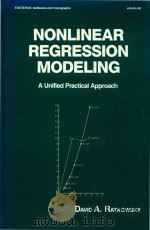
- Nonlinear regression modeling : a unified practical approach
- 1983 M. Dekker
-

- The Oxford guide to the English language
- 1984 Oxford Oxfordshire; New York: Oxford University Press
-

- THE OXFORD GUIDE TO THE FRENCH LANGUAGE
- 1991 OXFORD NEW YORK
-

- STEELS FOR THE USER SECOND EDITION
- 1944 CHAPMAN & HALL LTD.
-

- A GUIDE TO THE ENGLISH LANGUAGE
- 1915 T.C. AND E.C. JACK
-

- THE SKY:A USER'S GUIDE
- 1991 CAMBRIDGE UNIVERSITY PRESS
提示:百度云已更名为百度网盘(百度盘),天翼云盘、微盘下载地址……暂未提供。➥ PDF文字可复制化或转WORD
